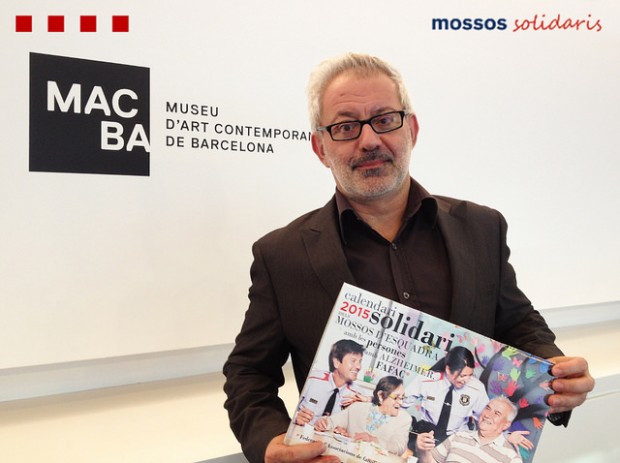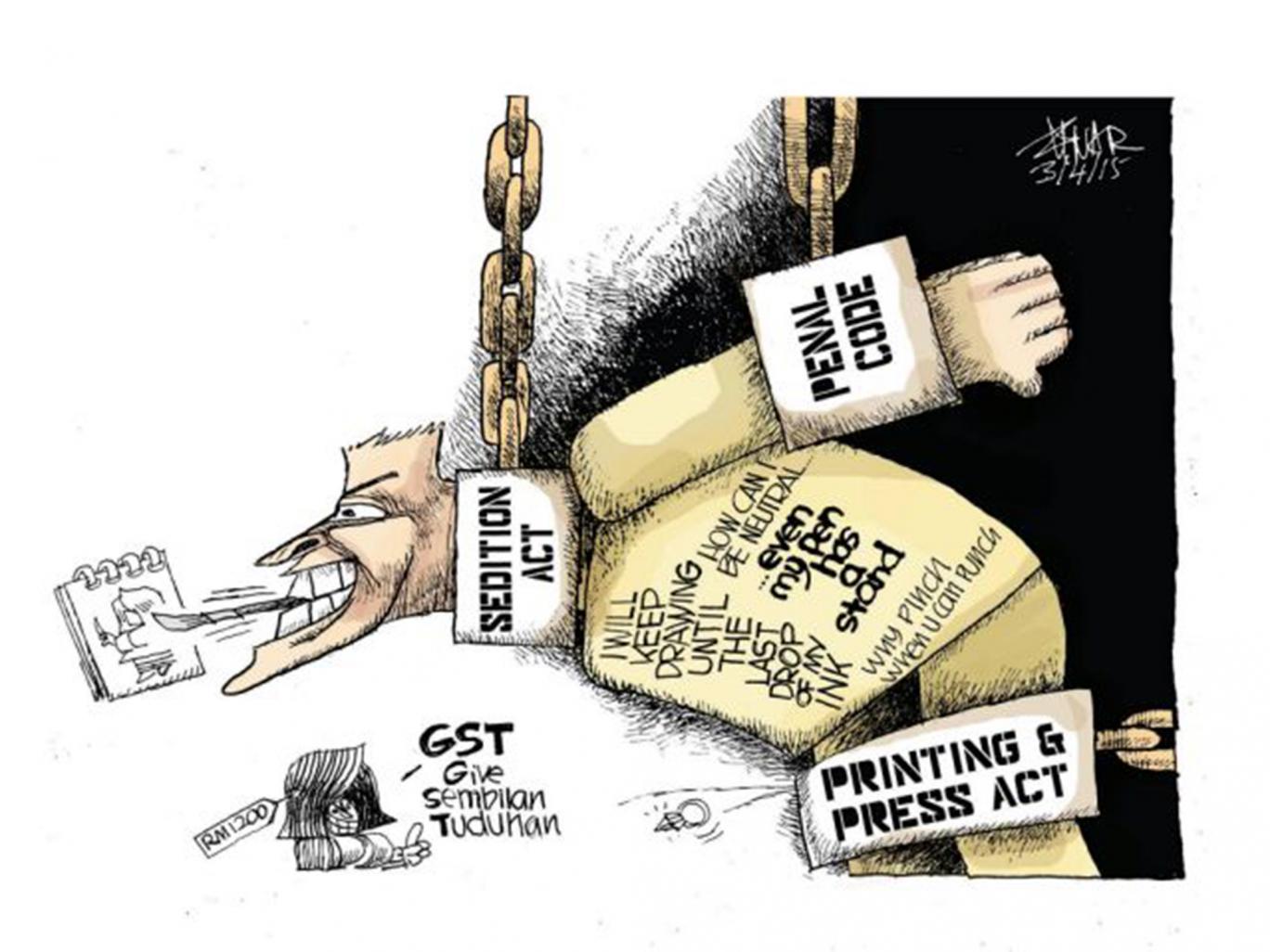15 Dec 2015 | Asia and Pacific, mobile, News and features, South Korea

Bartomeu Marí at the charity launch of a calander at the MACBA, from which he controversially resigned earlier this year. Credit: Flickr/Mossos. Generalitat de Catalunya
The South Korean art community has released a statement requesting that the Ministry of Culture, Sports and Tourism (MCST) implement reforms to protect artistic freedom ahead of the appointment of Bartomeu Marí as director of the National Museum of Modern and Contemporary Art (MMCA).
The decision to appoint Marí has been met with objections due to his controversial resignation as director of the Barcelona Museum of Contemporary Art (MACBA) in March, after he was accused of attempting to have a sculptor removed from an exhibition called La Bestia y el Soberano (The Beast and the Sovereign).
The satirical sculpture by Ines Doujak, titled Not Dressed for Conquering, featured former Spanish King Juan Carlos and Bolivian labour leader and feminist Domitila Chúngara involved in a sexual act with a dog on a bed of SS helmets. The exhibition went ahead despite Marí’s alleged attempts to cancel the whole exhibition when curators refused to remove the sculptor, leading to him firing two curators and his own resignation.
The Korean art community released their statement in November when Marí was the leading candidate for the position. They stated: “We demand that both the MMCA and its overseeing body, the MCST, offer plausible explanations regarding the appointment of the new MMCA director and institute fully fledged reforms to protect and foster artistic freedom so they may perform the duties they were originally intended as proponents of the arts.”
They also used the statement, which has been signed by nearly 800 artists, to highlight their concerns about the South Korean government’s mounting censorship of and bureaucratic restrictions on artistic freedom. They state: “We strongly oppose all variants of censorship and surveillance that harm the autonomy of art, and we pledge multifaceted, continued efforts to recover the autonomy and independence of art.”
Marí, who is also currently the president of the International Committee for Museums and collections of Modern Art (CiMAM), was officially appointed as director on 2 December leading the group to release a new statement again asking the newly appointed director and the MCST institute reforms protecting artistic freedom, which would be submitted to the culture minister and director on his appointment today.
The new director took nearly two weeks to respond to the complaints by stating he opposes censorship of any kind. He told a press conference in Seoul: “I stand against all kinds of censorship, and I support the freedom of expression. These are my values.”
He added: “I am sad there are artists who opposed my nomination. But there are many who support me. I hope I can be judged by what I do here, not by what some people say happened in the past.”
31 Oct 2015 | Events, mobile

Cartoon by Zunar
Malaysian cartoonist Zunar, who is facing a trial for his work, is to have four of his most celebrated cartoons exhibited at London’s Cartoon Museum.
“This will be my very first exhibition held in a cartoon museum. At a time when I am facing pressure from the Malaysian government for my works this is genuine encouragement, a tribute I humbly acknowledge and am tremendously grateful for,” said Zunar, who is facing nine charges under the Sedition Act and potentially up to 43 years in prison.
Zunar’s work will be on display at the museum’s cartoon and caricature gallery from 4 Nov 2015, alongside a new exhibition Gillray’s Ghost, marking the 200th anniversary of the death of English caricaturist James Gillray who was also regarded as a provocative figure in his day.
“Zunar is part of a great political cartooning tradition which asks awkward questions of those in power in images which endure in people’s memory,” said Anita O’Brien, director of The Cartoon Museum. “No doubt Gillray would be sympathetic to his cause so it is appropriate that their works are on show at the same time.”
When: From Wednesday, 4 Nov 2015 to January 2016
(Hours: Mon – Sat: 10.30 – 17.30, (inc. Bank Holidays); Sun 12.00 – 17.30)
Where: The Cartoon Museum, 35 Little Russell Street, London WC1A 2HH (map)
Tickets: Admission information
3 Oct 2014 | Europe and Central Asia, News and features, United Kingdom

(Photo: Banksy.co.uk
There’s a grand tradition of satire and mocking the great, the good and the very ordinary in Britain. From Swift’s Modest Proposal to Not the Nine O’Clock News, and from TV’s stunning Spitting Image to the magnificent everyday newspaper cartoons by masters such as Martin Rowson and The Independent’s own Dave Brown.
So as a nation that has grown up on a diet of cartoons and caricatures seen over our morning boiled eggs why should we worry about Banksy taking artistic aim at the current debate on immigration, and poking fun at it in a mural on a seaside town’s walls? Well we shouldn’t, of course, because we have grown up on that very same diet of mocking and magnifying debates using caustic comedy, and Banksy’s murals are just modern manifestations of that.
In his mural are some grey pigeons, carrying placards, and down there we have a colourful exotic bird, clearly one that has migrated here, possibly for the summer, and the grey ones are not keen. One of the grey birds holds a sign saying: “Go back to Africa” and another holds “Keep off our worms”.
Here, in the mural, are some of things people say about immigration on the streets of Clacton, and on the streets of other towns or cities. And what this mural is showing are some of those ordinary views. To me what it is suggesting is: “What next? Are we going to stop birds migrating here for the summer?” Anyway, whether you think it is funny or not, you surely can’t deny that it is magnifying some of the debates we are having about immigration in these past few months, and no doubt in the next six as we approach the general election, and locally in Clacton-on-Sea, in its upcoming by-election.
Swift suggested the Irish should eat their babies; Spitting Image had members of the cabinet spitting out vegetables. This is taking an idea or discussion that is in the public arena and magnifying it, sometime to outrageous proportions, to poke fun and to stir up debate over the cornflakes, and to make people think a bit harder.
Caricature has historically been able to point fingers, and make fun and spike discussion in ways that editorials in newspapers don’t reach; a sort of Heineken effect.
Tendring District Council has explained that it has a rapid reaction force on seafront graffiti, and when just one person complained and found the language racist, its anti-grafitti team was dispatched, agreed with that the language could be seen that way, and acted within “their remit” to get rid of it. Their spokesman said the team did not have to consult and no one knew this was a Banksy. Apparently it would be fine if Banksy wanted to come back and do something else though.
Sadly, all it takes one person to think something is racist, and we paint over a great bit of current commentary on intolerance, even though as lawyer Tamsin Allen outlines “political speech is given higher protection by the European court during an election period than at other times”. The British have a long and glorious history of satire and humour. And we should never feel the need to paint over things that challenge our views. Challenge and debate make us stronger, and we should grasp that freedom to debate as hard as we possibly can.
A version of this article was originally posted on 2 October on Independent Voices



